Nine New Stadtman Investigators Take on the Scientific World
Eagerly tackling challenging questions; using powerful scientific techniques; already making significant discoveries. NIH’s Stadtman Investigators are taking on the biomedical-research world. You’ve already met several in past issues of The NIH Catalyst. Get ready to meet nine more. The Earl Stadtman Tenure-Track Investigator Program, launched in 2009 and named for the legendary biochemist who worked at NIH for 50 years, aims to recruit a diverse group of scientists pursuing interests across the biomedical-research spectrum.
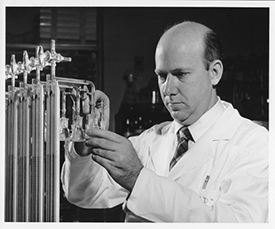
CREDIT: COURTESY OFFICE OF NIH HISTORY
The NIH-wide recruiting program for intramural scientists was named for legendary NIH investigator Earl Stadtman (above, in 1952) who died in 2008.
Cancer epidemiologist Constanza Camargo (NCI-DCEG) and her colleagues showed that Epstein-Barr virus–positive gastric cancer is a different clinical entity than other subtypes of gastric cancer and requires new diagnostic tools and treatment regimens. NIAID scientist Heather Hickman helped define a mechanism used by cytotoxic T cells to locate virus-infected cells in tissue. Two other NIAID investigators, Tae-Wook Chun and Susan Moir, both worked with NIAID Director Anthony Fauci on human immunodeficiency virus (HIV) research. Chun helped demonstrate for the first time that a reservoir of latent cells harboring HIV persisted in infected individuals even though they were receiving clinically effective antiretroviral therapy. Moir helped describe HIV-associated B-cell exhaustion, a dysregulation of immunologic memory of B cells that occurs due to the persistence of HIV in individuals whose viremia is not kept in check.
The two Stadtman Investigators from NIDDK—Nicholas Guydosh and Jinwei Zhang—both made discoveries about RNA. Guydosh, who studies protein synthesis, showed that the failure of translation causes ribosomes to use an unconventional mechanism to translate messenger RNAs. Zhang was a postdoc when he determined the first crystal structure of a T-box riboswitch RNA in a complex with its binding partner, a transfer RNA.
Ariel Levine (NINDS) helped identify a group of neurons in the spinal cord that are a core component of the neural circuits that govern movement. As a postdoc, Alexander Sodt (NICHD) discovered a few dramatic cases in which scientists’ assumptions about the behavior of lipids were incorrect; he’s continuing his work to improve the understanding of complex cellular membranes. Mia Sung (NIA) helped resolve a long-running scientific debate about the dynamics of the NF-kappaB protein, a master regulator of immunity and cell survival: Using long-term live microscopy, she showed that the protein has multiple oscillations in individual cells after exposure to a pro-inflammatory stimulus.
Following are lightly edited responses to some of the questions that The NIH Catalyst posed to these new Stadtmans. For more information about the Stadtman Tenure-Track Investigators program and how to apply, click here.
M. CONSTANZA CAMARGO, PH.D., NCI-DCEG
Earl Stadtman Investigator, Metabolic Epidemiology Branch, Division of Cancer Epidemiology and Genetics, National Cancer Institute
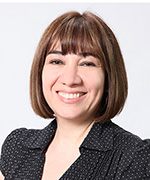
EDUCATION: Pontificia Universidad Javeriana, Bogotá, Colombia (M.H.A.); Escuela de Salud Pública de México, Instituto Nacional de Salud Pública, Cuernavaca, México (M.S. in epidemiology); University of Illinois at Chicago, Chicago (Ph.D. in public health and epidemiology)
TRAINING: Predoctoral fellow, postdoctoral fellow, and research fellow, NCI
CAME TO NIH: In 2008 as a summer fellow during her doctoral program and did part of her dissertation at NCI; became a postdoctoral fellow in 2010 and a research fellow in 2012, and a Stadtman Investigator in 2016
WEBSITE: https://irp.nih.gov/pi/maria-constanza-camargo
Research Focus: I am a cancer epidemiologist. My research focuses on Helicobacter pylori infection, premalignant gastric lesions, and gastric cancer. As a smaller research effort, I conduct studies of esophageal squamous-cell carcinoma with an emphasis on the potential etiologic role of infections. In both lines of research, my program combines population-based studies on cancer causation with projects that may have translational applications for cancer screening, prevention, and treatment.
How did you become interested in science and your field? During high school, my laboratory classes in biology, chemistry, and physics captured my interest in science. At that time, I imagined my professional career in a clinical or research-lab setting. I received a B.S. in bacteriology and worked in a clinical lab for a few years. I stumbled into the field of epidemiology by accident. In an effort to redirect my career, I joined a Master’s program in Health Administration in which a course in the principles of epidemiology was required as part of the curriculum. I became fascinated with the potential of using epidemiology to improve public health. Soon after graduation, I was offered an opportunity to become a field coordinator for a cohort study tracing the natural history of cervical human Papillomavirus infections at the Colombian National Cancer Institute (Bogotá, Colombia). Through this field experience working with real-world epidemiologists, I developed a deeper appreciation for population and public-health sciences, which drove me to pursue a master’s and later a doctoral degree in the area. The support and encouragement of great mentors throughout my career and their invaluable advice have made the difference in my success professionally and personally.
Have you made any significant discoveries? My colleagues and I have provided key evidence supporting that Epstein-Barr virus–positive gastric cancer is a different clinical entity than other subtypes of gastric cancer and requires new diagnostic tools and treatment regimens. (Gut 63:236-243, 2014; DOI: 10.1136/gutjnl-2013-304531; Int J Cancer 134:948-953, 2014; doi: 10.1002/ijc.28402; and Br J Cancer 105:38-43, 2011; DOI: 10.1038/bjc.2011.215) This project is the result of a collaboration among an international team of researchers. More recently, we have reported on gastric-cancer incidence trends showing that this neoplasia is re-emerging in the United States, particularly affecting young non-Hispanic whites. (JAMA 303:1723-1728, 2010; DOI: 10.1001/jama.2010.496)
What are the advantages to working in the NIH IRP? I feel honored and privileged to be a member of the NIH IRP. The extensive resources, expertise, and diversity of thought in the IRP provide unique opportunities to conduct long-term, innovative, and high-impact science, projects that are difficult to support under extramural grants at a university.
What is most exciting about your work? Epidemiology is truly a team science. Innovations evolve out of an open exchange of creative ideas with my colleagues, in which we discuss and debate concepts that result in high-quality research. I enjoy all the steps of the research process: conceiving, proposing, executing, and publishing our results.
Is there anything you can look back on now and realize it was significant (but you may not have realized it at the time)? During my master’s degree studies in Mexico, I felt disappointed when funding issues pushed me to change the subject of my capstone project from a cervical-cancer-related research question to a gastric-cancer study. Now, I feel grateful for that situation as it successfully changed the path of my career to focus on a neglected disease, gastric cancer, which is one of the most devastating cancers in various populations of Eastern Asia and Europe as well as in parts of Central and South America.
What’s hot in your field right now? 1) Identifying noninvasive biomarkers for the detection of premalignant lesions; 2) Feasibility and potential risk vs. benefits of H. pylori eradication to prevent gastric cancer; 3) Elucidating the role of non-H. pylori gastric microbiome in carcinogenesis; and 4) Identifying the causal factors driving the re-emergence of gastric cancer in Western populations.
What do you like to do outside of work? I like dancing (mostly salsa), watching movies, traveling to explore new places, trying new restaurants, and spending time with family and friends.
If I had more time I would … do more charity work in the community.
What’s the hardest lesson you ever had to learn? To say “No” to an interesting new research project. I am still learning to be more realistic with time constraints.
What about you would surprise most people? In 2005 Hurricane Katrina advanced my research career. Her winds pushed me from New Orleans (Louisiana State University Health Sciences Center) to Nashville (Vanderbilt University Medical Center), then to Chicago (University of Illinois at Chicago), and later to Bethesda.
Would you like to tell us anything else? I love what I do. Research is not easy, but it is fun. So, for those considering this exciting career, I have some pieces of advice: 1) have passion for it; 2) know the knowledge gaps in your field; 3) do not be afraid of null results; 4) expose yourself to topics and people outside of your field so you can think outside of the box (a conversation can change everything); and 5) enjoy the long-term journey!
TAE-WOOK CHUN, PH.D., NIAID
Earl Stadtman Investigator and Chief, HIV Immunovirology Unit, Laboratory of Immunoregulation, National Institute of Allergy and Infectious Diseases
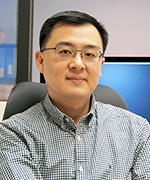
EDUCATION: Johns Hopkins University School of Medicine, Baltimore (Ph.D. in biochemistry, cellular, and molecular biology)
TRAINING: Research fellow, Laboratory of Immunoregulation, NIAID
CAME TO NIH: In 1997 for training; staff scientist (2001–2009); associate scientist (2009–2016); became a Stadtman Investigator in 2016
WEBSITE: https://www.niaid.nih.gov/research/tae-wook-chun-phd
Research Focus: My research focuses on 1) delineating the role of viral reservoirs in the pathogenesis of human immunodeficiency virus (HIV) disease; 2) examining host and viral factors that contribute to the maintenance of HIV reservoirs; and 3) developing therapeutic strategies aimed at achieving durable virologic control in infected individuals in the absence of antiretroviral therapy. My lab collaborates with NIAID’s HIV clinic to conduct phase 1 clinical trials that will help us develop safe, effective, and scalable therapeutic strategies that would allow HIV-infected individuals to control viral replication in the absence of daily antiretroviral drugs.
How did you become interested in science and your field? My father was a physician, which may have prompted my curiosity toward medicine and research at a young age. During my junior year in college, I was preparing for a school assignment and read several journal articles on HIV, one of which was published by NIAID’s Laboratory of Immunoregulation. Although my knowledge of HIV was limited at the time, I was intrigued by how the interactions between virus and host ultimately lead to the destruction of the immune system. This was the moment I decided to pursue a career in HIV research.
Have you made any significant discoveries? My Ph.D. thesis included a project that led to the discovery and characterization of a minute fraction of resting CD4+ T cells carrying the integrated form of HIV DNA (now commonly referred to as the latent viral reservoir) in HIV-infected individuals (Nature 387:183–188, 1997; DOI:10.1038/387183a0)
Shortly after I arrived at the NIH, Dr. Anthony Fauci and I demonstrated for the first time that a reservoir of latent cells harboring HIV persisted in virtually all infected individuals who were receiving clinically effective antiretroviral therapy. This finding has been the basis of subsequent and current research programs that focus on eliminating such cells in attempts to cure HIV in infected individuals who are receiving antiretroviral therapy. (Proc Natl Acad Sci U S A 94:13193–13197, 1997)
What are the advantages to working in the NIH IRP? Of the many advantages, one of the most important and meaningful to me is the ability to pursue bench-to-bedside research that could improve the way we treat HIV-infected individuals.
What is most exciting about your work? Seeing our ex vivo research projects progress and evolve into phase 1 clinical trials. Not only do I get to design and execute clinical trials, but I also get to meet and interact with the patients as well as the clinical staff.
What’s hot in your field right now? A major emphasis of HIV-therapeutic research is the development of strategies aimed at achieving sustained virologic remission in infected individuals in the absence of antiretroviral therapy.
What do you like to do outside of work? I have always enjoyed watching animals and understanding their behavior. Luckily, I live close to the National Zoo and have ample opportunities to observe my favorite animals, the pandas. In addition, the NIH campus itself is home to many deer and Canada geese that have become part of the landscape. It has been a great joy to watch the cycle of life as each year brings newcomers to our sanctuary.
If I had more time I would … investigate the pathogenesis and immunologic impact of other viruses, such as hepatitis C virus, cytomegalovirus, and herpes viruses.
What’s the hardest lesson you ever had to learn? No matter how hard we try to make our therapeutic research clinically and physiologically relevant, it is often necessary to conduct human trials to understand the true significance of laboratory findings. Conducting clinical trials can often present daunting challenges and come with a great deal of responsibilities and some risk.
What about you would surprise most people? I always wanted to become an airline pilot and would watch airplanes landing and taking off for hours.
NICHOLAS GUYDOSH, PH.D., NIDDK
Earl Stadtman Investigator, Section on mRNA Regulation and Translation, Laboratory of Biochemistry and Genetics, National Institute of Diabetes and Digestive and Kidney Diseases
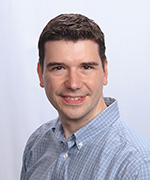
EDUCATION: University of Cambridge, Cambridge, UK (M.Phil. in chemistry); Stanford University, Stanford, Calif. (Ph.D. in biophysics)
TRAINING: Postdoctoral fellow, molecular biology and genetics, Johns Hopkins University (Baltimore)
CAME TO NIH: As a Stadtman Investigator in 2016
WEBSITE: https://irp.nih.gov/pi/nicholas-guydosh or here
Research Focus: I am studying the basic mechanism of protein synthesis that takes place in the cell and how this translation of the genetic code is regulated. In my earlier work as a postdoc, I discovered that the failure of ribosome recycling after protein synthesis leads to the production of short peptides. My lab is investigating how this process helps cells respond to stress, such as nutrient starvation, and defend against viral infection. We approach these questions by employing a number of high-throughput and computational tools and single-molecule fluorescence microscopy.
How did you become interested in science and your field?I’ve been fascinated by science for as long as I can remember. Raising caterpillars, keeping aquariums of fish, and building computers are all wonderful early memories. I got interested in RNA and translation when I began my postdoc and came to appreciate how the process is central to all life.
Have you made any significant discoveries?My most important work showed that the termination of translation isn’t perfect: Its failure leads to ribosomes using an unconventional mechanism to translate the three-prime untranslated regions (3’-UTRs) of messenger RNAs (mRNAs). The 3’-UTR is one of several regions in mRNA that is not translated into protein and often contains regulatory regions that post-transcriptionally influence gene expression. It’s exciting to figure out what regulates this process and how it affects cells and is involved in disease. (Cell 156:950–962, 2014; DOI:10.1016/j.cell.2014.02.006 and Cell 162:872–884, 2015, DOI:10.1016/j.cell.2015.07.041)
What are the advantages to working in the NIH IRP? There are many! The biggest is the breadth and talent of the scientists and physicians on our campus. It’s easy to engage with very talented people—with other perspectives—who have also thought about the problems I care about. We also have fantastic core facilities and few constraints on our time to keep us from doing science.
What is most exciting about your work? The best moments are those when you first see a piece of data or finish a rudimentary analysis and you’re not sure what it means but you know it’s going to be exciting.
Is there anything you can look back on now and realize it was significant (but you may not have realized it at the time)? Interviewing for independent positions was a training process in its own right and helped me appreciate many other subfields and how they are interdependent.
What’s hot in your field right now? There’s a growing awareness that gene expression isn’t limited to canonical coding sequences and that translation of “noncoding” regions is important for understanding cellular adaptation to stress and immunity.
What do you like to do outside of work? Bike riding; gardening; and having adventures around Montgomery County with my young daughter.
If I had more time I would … cook more, read more, and learn a musical instrument.
What’s the hardest lesson you ever had to learn? The reality of science is that it moves slowly and scientists spend much of their time debugging instruments and protocols that don’t work. It makes it all the more exciting when breakthroughs do occur.
HEATHER HICKMAN, PH.D., NIAID
Earl Stadtman Investigator and Chief, Viral Immunity and Pathogenesis Unit, Laboratory of Clinical Immunology and Microbiology, National Institute of Allergy and Infectious Diseases

EDUCATION: University of Oklahoma Health Sciences Center, Oklahoma City (Ph.D. in microbiology and immunology)
TRAINING: Postdoctoral fellow, Cell Biology Section, Laboratory of Viral Diseases, NIAID
CAME TO NIH: In 2004 for postdoctoral training; became a staff scientist in 2007, a senior associate scientist in 2015, and a Stadtman Investigator in 2017
WEBSITE: https://www.niaid.nih.gov/research/heather-hickman-phd
Research Focus: My lab focuses on understanding antiviral immunity with an emphasis on the anatomy of immune responses, including the lymph node and infected peripheral tissues. We study the immune response to a number of different viruses, from large DNA viruses such as Vaccinia virus to positive- and negative-stranded RNA viruses including Zika and influenza viruses. To complement many molecular and cellular approaches for studying viral immunity, we employ a number of microscopic techniques (including two-photon microscopy) to visualize both virus-infected cells and antiviral immune effectors in animals.
How did you become interested in science and your field? Both my parents instilled a sense of discovery in me from a young age. From makeshift microscopes to geode-collecting mountain hikes, they taught me to explore and question my surroundings. I cannot remember not wanting to be a scientist. My interests focused considerably as an undergraduate once exposed to coursework on viruses and their interactions with the host.
Have you made any significant discoveries? My colleagues and I defined a mechanism used by cytotoxic T cells to locate virus-infected cells in tissue (Immunity 42:524–537, DOI:10.1016/j.immuni.2015.02.009). My independent research program will extend these concepts to better understand how antiviral effectors prevent infection and eliminate infected cells.
What are the advantages to working in the NIH IRP? The strong and diverse scientific community with which to collaborate, access to cutting-edge equipment (like the two-photon microscope we use daily), support for the study of complex and high-risk problems, and stable funding.
What is most exciting about your work? Making new discoveries.
Is there anything you can look back on now and realize it was significant (but you may not have realized it at the time)? During my undergraduate training, I spent hours in a botany lab microscopically imaging green fluorescent protein–labeled viroid-movement proteins trafficking through the plasmodesmata of tobacco leaves in real time. Although at the time I didn’t realize it, these studies taught me the value of patience during experimentation, important practical and computational skills I continue to use, and also that I truly love microscopy.
What’s hot in your field right now? There are a handful of viruses that immunologists have extensively employed to probe the antiviral immune response. With the emergence of new viruses causing significant human morbidity, developing a greater understanding of pathogenesis and antiviral immunity during infection with non-model viruses has become imperative.
What do you like to do outside of work? I enjoy outdoor activities, including running and gardening.
If I had more time I would … spend more focused time with my husband and son.
What’s the hardest lesson you ever had to learn? Not every experiment can be perfect, but it can still be informative.
What about you would surprise most people? I’m a big-time college football fan—go Sooners!
ARIEL LEVINE, M.D., PH.D., NINDS
Earl Stadtman Investigator, Chief of Spinal Circuits and Plasticity Unit, National Institute of Neurological Disorders and Stroke
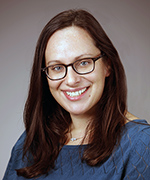
EDUCATION: The Rockefeller University, New York (Ph.D. in developmental biology); Weill Cornell Medical, Cornell University, New York (M.D.)
TRAINING: Postdoctoral fellow in neuroscience, Salk Institute (La Jolla, Calif.)
CAME TO NIH: As a Stadtman Investigator in 2015
WEBSITE: https://neuroscience.nih.gov/ninds/Faculty/Profile/ariel-levine.aspx
Research Focus: My colleagues and I study how the molecules, neurons, and circuits of the spinal cord mediate normal behavior and how they change and adapt to allow learning. With the mouse as our model system, we use novel genetic tools, molecular biology, and behavioral analysis to understand mechanisms of plasticity — from the control of gene expression to the wiring of spinal cord circuits. Ultimately, we hope to leverage novel findings in basic science to improve the recovery of patients who’ve suffered stroke or spinal-cord injury.
How did you become interested in science and your field? I became interested in science as a young child through my father (who was a physician-scientist) sharing his love of science with me. Often in the evenings, I would ask him a question about nature, and his answer would serve as my bedtime story. I became interested in my specific field of spinal-cord biology through my postdoctoral research with Dr. Sam Pfaff at The Salk Institute. I chose to work with him because his research linked my prior training in developmental biology with the field of neuroscience, which I wanted to learn, and because his lab was a lively and exciting place to do research. In addition, I thought that several features of the mouse spinal cord made it a very tractable system to study how networks of neurons mediate behavior.
Have you made any significant discoveries? We found a group of neurons in the spinal cord that seem to be a core component of the neural circuits that govern movement. These cells receive direct inputs from the brain’s motor area as well as from sensory neurons that inform the spinal cord about the body. The spinal neurons we identified are a major source of input to the motor neurons that directly control muscles. When we activated these spinal neurons, we found that they can drive coordinated activity in multiple motor groups. (Nat Neurosci 17:586–593, 2014; DOI:10.1038/nn.3675)
What are the advantages to working in the NIH IRP? I think the neuroscience community at NIH is excellent, supportive, and scientifically diverse. The number of labs doing exciting work here means that we have ample opportunities to interface with and develop rich collaborations with the many investigators doing cutting-edge work. In addition, starting up a lab without external pressures to write grants or do formal classroom teaching has allowed me to focus 100 percent on the science.
Is there anything you can look back on now and realize it was significant (but you may not have realized it at the time)? When I started my graduate research in Dr. Ali Brivanlou’s lab at Rockefeller University, I had assumed that he would assign me a project. However, the first thing he told me was to leave the lab and come back when I could describe what was the most important question in our field of developmental biology. He said that this question would define my Ph.D. project. I first picked a question that was too big to answer at the time, so I settled into another project for my graduate work. But that experience transformed how I thought about myself as a scientist, and I continue to ask that important question of myself.
What’s hot in your field right now? Technology. There is an explosion of tools that allow us to answer fundamental questions in a completely new way as well as ask new questions that were not possible to think about experimentally before. It is a very exciting time to do science.
What do you like to do outside of work? When I’m not at work, I’m with my family. My husband, my son, my daughter, and my parents are a huge part of my downtime and relaxation. I really enjoy being outdoors, either walking in the beautiful forests around here or watching one of my kids’ many sports games. And I love reading and getting together with our friends.
SUSAN MOIR, PH.D., NIAID
Earl Stadtman Investigator, B-Cell Immunology Unit, Laboratory of Immunoregulation, National Institute of Allergy and Infectious Diseases

EDUCATION: Université du Québec, Institut Armand-Frappier, Laval, Québec (M.Sc. in virology and immunology); Université Laval, Québec (Ph.D. in microbiology and immunology)
TRAINING: Postdoctoral training, NIAID’s Laboratory of Immunoregulation (LIR)
CAME TO NIH: In 1996 for training in NIAID’s LIR; research fellow positions, LIR (2001–2006); staff scientist, LIR (2006–2010); associate scientist, LIR (2010–2015); became a Stadtman Investigator in 2015
WEBSITE: https://irp.nih.gov/pi/susan-moir
Research Focus: My group’s research focuses on the roles of B lymphocytes in human immunodeficiency virus (HIV) infection and pathogenesis. Our approach involves assessing transcriptional, phenotypic, and functional attributes of B cells that circulate in the peripheral blood and those that reside in tissues, particularly lymph nodes and the bone marrow. Although most of our studies are designed to investigate B-cell activities in HIV-infected individuals, we are also interested in expanding our knowledge of human B-cell immunology as it relates to health and disease and in identifying common pathways of dysregulation that could serve as the basis for therapeutic interventions aimed at reversing immune deficiencies.
How did you become interested in science and your field? My father and older brother are engineers, and I wanted to do something similar. I soon realized, however, that biological sciences were a better fit. I found my calling after taking an advanced immunology class during graduate school. Once at NIH, the study of human immunology in health and disease quickly became my passion, especially as it relates to B cells in HIV infection.
Have you made any significant discoveries? Under the leadership of my longtime mentor, Dr. Anthony Fauci, the LIR has been leading the field in B-cell pathogenesis in HIV disease for more than three decades, with my involvement being close to 20 years. In 2008, we described HIV-associated B-cell exhaustion, a dysregulation of immunologic memory of B cells that occurs due to the persistence of HIV, especially in individuals whose viremia is not kept in check either with antiretroviral therapy or without in rare cases of long-term nonprogression (J Exp Med 205:1797–1805, 2008; DOI:10.1084/jem.20072683)
Since 2008, similar observations have been made in other infectious and noninfectious diseases and conditions that cause increased immune activation and inflammation, including aging.
What are the advantages to working in the NIH IRP? Without a doubt, it is being able to conduct human-based studies with highly dedicated people and state-of-the-art facilities.
What is most exciting about your work? What gets me going every morning is the opportunity and privilege of conducting human-based studies that may, in the future, help alleviate suffering of people afflicted by the diseases we study.
Is there anything you can look back on now and realize it was significant (but you may not have realized it at the time)? After the departure of one of our staff clinicians, I was asked to take over some of his clinical protocols, even though I do not have a medical degree. It has been very challenging but also very fulfilling to take on these responsibilities and interact directly with our study participants and clinical staff.
What’s hot in your field right now? The origin, regulation, and outcomes associated with the dysregulated B cells—that we first described in 2008 in the setting of HIV infection—are being investigated by many research groups in many different settings.
What do you like to do outside of work? I enjoy spending time with family and friends, cooking, and staying active by swimming and exploring Washington, D.C., on foot and bicycle.
If I had more time I would … do more volunteer work in my community, serving underprivileged youth and our veterans.
What’s the hardest lesson you ever had to learn? Patience
What about you would surprise most people? In my youth, I was heading for trouble. But sports and a deep-seated fear of academic failure kept me on the straight and narrow.
Would you like to tell us anything else? Thank you!
ALEXANDER SODT, PH.D., NICHD
Earl Stadtman Investigator, Section on Integrative Biophysics, Eunice Kennedy Shriver National Institute of Child Health and Human Development
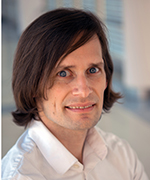
EDUCATION: University of California, Berkeley, Berkeley, Calif. (Ph.D. in chemistry)
TRAINING: Postdoctoral fellow in biophysics, University of California, Berkeley; postdoctoral fellow in biophysics, National Heart, Lung, and Blood Institute
CAME TO NIH: In December 2009 for training; became a Stadtman Investigator in 2016
WEBSITE: https://science.nichd.nih.gov/confluence/display/sodt/Home
Research Focus: My lab uses molecular simulations to compute how membrane composition and the modular chemistry of lipids determine the material and physical properties of membranes. We use physics-based all-atom simulation with new statistical mechanical methods, mathematical analysis, and creative model building to determine the role of lipids in disease. The physics are important because they directly influence processes related to disease, such as dysfunctional signaling at the membrane in cancer and the ability of viruses to penetrate into and bud from the cell.
How did you become interested in science and your field? I grew up near Seattle in the booming dot-com era. My friends were all interested in computer programming; some of them skipped college to take jobs. I loved programming but couldn’t resist the course titles for physics and chemistry, which seemed to promise to reveal so much about the world. I realized very gradually that a scientist could use a computer to do an experiment. It has been so much fun to show NIH summer interns the same thing, but they are learning much earlier than I did!
Have you made any significant discoveries? I think of biophysical models as defined by their assumptions. Where our assumptions go wrong, our models go wrong. During my postdoctoral work I discovered a few dramatic cases in which our assumptions about the behavior of lipids were incorrect. I am now trying to use modifications of the theory to improve our understanding of complex cellular membranes.
What are the advantages to working in the NIH IRP? I love the NIH IRP because of the problems being solved here and the related expertise of the research labs. At a university, I would probably take an easier path and work on abstract problems that my fellow physical chemists would appreciate. I relish the challenge of demonstrating to the NIH that quantitative physics–based modeling can help elucidate mechanisms in disease.
What is most exciting about your work? The best part of modeling is when a model makes a counterintuitive prediction that is verified. If I smell even a whiff of this type of prediction, it’s hard to work on anything else.
What’s hot in your field right now? “What’s hot” in simulation is complicated because computer power is still growing quickly year after year. To work on a new “hot” problem is to draw conclusions on something that is barely feasible. A few years later when the project becomes truly realistic, the conclusions would have to be revised. Today some people are trying to simulate viruses and organelles at the resolution of atoms but with limited statistical precision. I prefer the heat provided by my experimental collaborators on specific questions.
What do you like to do outside of work? My life outside of work is family and lawn maintenance (mostly family).
If I had more time I would … like to see my daughter before I go to work.
What’s the hardest lesson you ever had to learn? When to quit a bad idea. I am still learning.
What about you would surprise most people? When I met my wife (she has style), I had been cutting my own hair. She was willing to ignore my terrible hair. Nowadays I have it professionally cut.
MYONG-HEE (MIA) SUNG, PH.D., NIA
Earl Stadtman Investigator and Chief, Transcription Systems Dynamics and Biology Unit, Laboratory of Molecular Biology and Immunology, National Institute on Aging
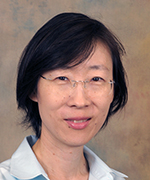
EDUCATION: State University of New York at Stony Brook, N.Y. (Ph.D. in mathematics)
TRAINING: Research associate, Institute for Physical Science and Technology, University of Maryland (College Park, Md.)
BEFORE COMING TO NIH: Assistant professor, Department of Mathematics and Statistics, American University (Washington, D.C.)
CAME TO NIH: In 2000–2002 as a guest researcher (on sabbatical from American University); staff scientist (2002–2005) in the Biometric Research Branch, National Cancer Institute (NCI); staff scientist, Laboratory of Receptor Biology and Gene Expression, NCI (2005–2015); became a Stadtman Investigator in 2015
WEBSITE: https://irp.nih.gov/pi/myong-hee-sung
Research Focus: My lab applies quantitative-imaging, mathematical, epigenomic, and biochemical methods toward understanding the mechanisms of transcription-factor signaling and genome regulation in the immune system. We use these diverse systems-biology approaches to study how cell-signaling dynamics influence gene expression in immunity and how such control mechanisms are altered in aging.
How did you become interested in science and your field? I was initially trained as a mathematician, but I also found biology appealing because there are many open questions that have significant implications in human health and medicine. When I realized that I could use the mathematics of nonlinear dynamical systems to understand how important proteins—such as nuclear factor kappa–light-chain-enhancer of activated B cells (NF-kappaB)—may have temporally complicated activity patterns, I jumped right into the field.
Have you made any significant discoveries? Although NF-kappaB is considered a master regulator of immunity and cell survival, little was known about its dynamics before David Baltimore’s lab (California Institute of Technology, Pasadena, California) published a study in 2002. A few years later, Michael White’s lab (University of Liverpool, Liverpool, England) published a single-cell study containing results different from the Baltimore study. But each study had its own limitations, and the puzzle remained for several years. I used long-term live microscopy to quantitatively image the natural NF-kappaB protein and showed that it has multiple cycles of action (oscillations) in individual single cells after exposure to a pro-inflammatory stimulus. This finding resolved the debate and led to the possibility that signaling dynamics of transcription factors (proteins that control gene expression) may encode important functional information that cells receive from their environment such as infection or other danger signals. (PLoS One 4(9):e7163, 2009)
Subsequently, at the Keystone NF-kappaB meeting, our PLoS One work served as a proof that oscillations happen in wild-type cells, and the community came to a consensus. A review article recognized our discoveries as “tour de force microscopy work” that resolved the above-mentioned debate. (Immunol Rev 246:221–238, 2012. DOI:10.1111/j.1600-065X.2011.01092.x)
In another dynamics-conscious study, I made a connection between two very different fields—microscopy and genomics. By correlating the epigenetic patterns detected from DNA-cutting analysis (DNase-seq) and the kinetic data from quantitative live-cell microscopy, I noticed that some proteins do not leave “footprints” when they bind DNA in the genome. This work pointed out where future efforts must be focused. (Mol Cell 56:275–285, 2014; DOI:10.1016/j.molcel.2014.08.016)
What are the advantages to working in the NIH IRP? There are a huge number of top-notch experts in virtually all fields of biology. One can readily network with and find potential collaborators within NIH and go to on-campus seminars given by leaders in their fields.
What is most exciting about your work? It is exciting to see how a planned project often takes an unexpected turn and heads in an even more interesting direction than you imagined. I also find it gratifying to see a growing population of young scientists who are trained in both quantitative and biomedical sciences.
Is there anything you can look back on now and realize it was significant (but you may not have realized it at the time)? There are too many to mention here: All my choices and the people who have helped shape my career during the transition from mathematics to systems-cell biology.
What’s hot in your field right now? Developing technologies to monitor individual cells without destroying or disrupting them. I have just agreed to act as an editor for a journal issue on this topic.
What do you like to do outside of work? I enjoy listening to classical music and hanging out with my two daughters.
If I had more time I would … probably rekindle my hobby from graduate school years—playing a classical guitar.
What’s the hardest lesson you ever had to learn? I learned to be patient and not to expect immediate gratification.
What about you would surprise most people? Believe it or not, I played drums in a high school rock band. I thought it was the coolest thing then.
Would you like to tell us anything else? I’d like to say thanks to all who have worked for the Stadtman PI search over the years. Last year I had a chance to be on the other side of the table and found that it takes a lot of work to do a good job as a search committee member!
JINWEI ZHANG, PH.D., NIDDK
Earl Stadtman Investigator, Laboratory of Molecular Biology, National Institute of Diabetes and Digestive and Kidney Diseases
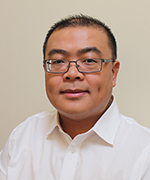
EDUCATION: University of Wisconsin-Madison, Madison, Wisc. (Ph.D. in biomolecular chemistry)
TRAINING: Postdoctoral training in molecular biophysics, Howard Hughes Medical Institute and Fred Hutchinson Cancer Research Center (Seattle); postdoctoral training in molecular biophysics, National Heart, Lung, and Blood Institute
CAME TO NIH: In 2011 for training; became a Stadtman Investigator in 2015
WEBSITE: https://www-mslmb.niddk.nih.gov/zhang/zhanglab.html
Research Focus: My research focuses on visualizing and understanding ribonucleic acids (RNAs) that aren’t used as templates to code for proteins, making them “noncoding” RNAs. They are frequently referred to as the “dark matter” of the genome. We are working to uncover the general motifs and principles that govern how noncoding RNA structures are built and organized, how RNA structures morph to change their shape, and how host and viral RNAs differentially modulate the activities of host proteins such as those involved in antiviral immunity. Such fundamental understanding of RNA will allow new therapeutics to be developed to modulate these biologically important molecules in human pathophysiology.
How did you become interested in science and your field? It probably all started when I was eight years old: My Dad brought me a case of 18 books collectively known as the 100,000 Whys, in which each page asks and answers a science-related question in plain language (in Chinese, I should add). While imparting knowledge and piquing my interest, they also cost me my perfect eyesight. While in graduate school, I was fascinated by the emerging area of RNA-based gene regulation such as riboswitches (genetic switches made of RNA). The sheer beauty of their architecture and elegance in how they work led me onto a path to explore the general principles and specific intricacies of RNA structure, function, and interactions.
Have you made any significant discoveries? My Ph.D. work helped define how nucleotides are loaded and assembled into RNA by bacterial RNA polymerases and how the progeny RNA can influence the parent protein enzyme in a “tail-wags-dog” scenario. My postdoctoral work determined the first crystal structure of a T-box riboswitch RNA in a complex with its binding partner, a transfer RNA (Nature 500:363–367, 2013; DOI:10.1038/nature12440)
This RNA-RNA interaction allows a great many pathogenic bacteria to detect and respond to nutrient limitation in an ever-changing environment. The work also provided a proof of principle that noncoding RNAs can recognize each other through their matching shapes beyond simply base-pairing to each other as does DNA. With the discovery of tens of thousands of noncoding RNAs in our and other genomes, we have barely scratched the surface.
What are the advantages to working in the NIH IRP? There are many. All good reasons for the NIH IRP to be called a researcher’s paradise. First, stable funding and a largely retrospective evaluation system afford us the academic agility to jump on a new idea (or off an old one) quickly, without having to convince a panel of experts first or getting stuck with an obsolete idea proposed in a grant. Second, the immense scale and diversity of the research community here, plus the vast resources in equipment and know-how, allow one to pick up essentially any new technique or capability smoothly. Third, a strong, long-lasting commitment to basic sciences has been so crucial to allow us to dig deep, where fundamental discoveries at the chemical and molecular levels are made. Ironically, many such foundational works, if formulated in an extramural NIH grant proposal, would probably not be funded due to insufficient medical relevance.
What is most exciting about your work? The ability to visualize and understand a molecule for the first time and the Eureka moment when we figure out how it works. With noncoding RNA as a young discipline, there are more unknowns than knowns, which is another source of excitement. Sometimes, our work is akin to trying to photograph an elephant before anyone knows what an elephant looks like or whether elephants are even real.
Is there anything you can look back on now and realize it was significant (but you may not have realized it at the time)? Not really. We learned to be quite good at seeing, predicting, and marketing the significance of our work.
What’s hot in your field right now? We are in the midst of a renaissance of RNA modifications right now. The recent recognition of widespread, diverse chemical modifications on messenger RNAs reveals another level of regulation in which writers, readers, and erasers deposit, interpret, and remove these RNA modifications. These seemingly minute variations can lead to profound changes in RNA structure, dynamics, and interactions and, in turn, to alterations of gene expression and cellular homeostasis.
What do you like to do outside of work? My family and I enjoy travel and nature. My personal favorites are the National Parks in the great states of Utah and Washington, especially the Canyonlands National Park (Utah) and Mount Saint Helens National Volcanic Monument (Washington).
If I had more time I would … learn new languages as well as more basic principles in math, physics, and chemistry. During college, one is frequently taught vast amounts of material without being briefed on their actual utility or importance. Now I wish I had paid more attention.
This page was last updated on Friday, April 8, 2022
